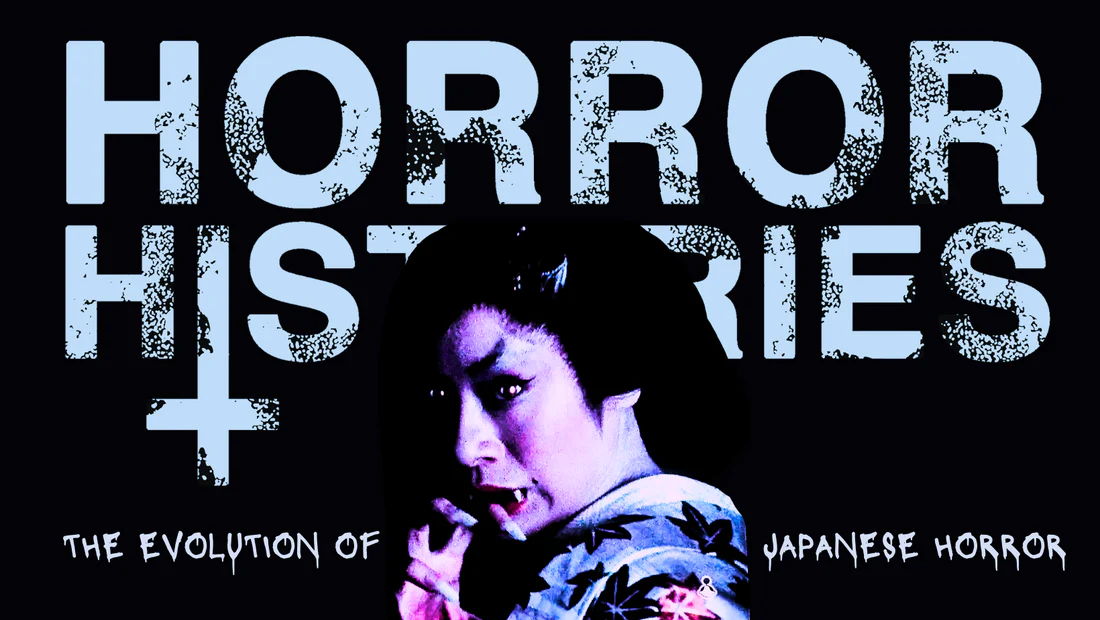Understanding Japanese Horror: A Look into the J-Horror Genre
Japanese horror, often referred to as J-Horror, is a genre that has captivated audiences worldwide with its unique blend of psychological terror, supernatural elements, and deep cultural roots. Unlike Western horror, which often relies on jump scares and gore, J-Horror tends to focus on atmosphere, tension, and the underlying fears that haunt the human psyche. In this post, we’ll explore the origins of J-Horror, its defining characteristics, and some of the most iconic films that have shaped this chilling genre.
1. The Origins of J-Horror: A Cultural Perspective
The roots of J-Horror can be traced back to Japan’s rich tradition of ghost stories, or kaidan. These tales, often based on folklore and ancient beliefs, feature vengeful spirits, cursed objects, and the eerie presence of the supernatural. One of the most famous examples is the story of Yotsuya Kaidan, a classic Japanese ghost story that has been adapted into numerous films and plays.

Why It Matters:
Understanding the cultural origins of J-Horror helps to appreciate its unique approach to horror, which is deeply intertwined with Japanese beliefs about death, the afterlife, and the spiritual world.
2. Key Characteristics of J-Horror
J-Horror is known for its distinct style, which sets it apart from other horror genres. Some of the key characteristics include:
- Psychological Horror: J-Horror often delves into the psychological fears of its characters, exploring themes of isolation, guilt, and the unknown. The horror is subtle, building slowly through atmosphere and suggestion rather than overt scares.
- Supernatural Elements: Ghosts (yūrei), curses, and other supernatural phenomena are central to J-Horror. These elements are often rooted in Japanese folklore and religious beliefs, making the horror feel both ancient and inescapable.
- Minimalism: J-Horror films tend to be understated in their visual and narrative style. The use of minimal special effects, quiet pacing, and simple yet haunting visuals creates a sense of dread that lingers long after the film ends.
Why It Matters:
These characteristics make J-Horror a unique and deeply unsettling genre, where the horror lies in what is unseen and unexplained rather than in overt violence or gore.
3. Iconic J-Horror Films
Several films have come to define the J-Horror genre, leaving an indelible mark on the world of horror cinema. Here are a few that stand out:
- Ringu (1998): Directed by Hideo Nakata, Ringu is perhaps the most famous J-Horror film. The story of a cursed videotape that kills anyone who watches it within seven days became a global phenomenon, spawning sequels, remakes, and a lasting impact on the horror genre.
- Ju-On: The Grudge (2002): Directed by Takashi Shimizu, Ju-On: The Grudge tells the story of a cursed house where vengeful spirits exact their revenge on anyone who enters. The film’s non-linear narrative and terrifying ghostly appearances make it one of the most unsettling films in the genre.
- Dark Water (2002): Another classic by Hideo Nakata, Dark Water combines psychological horror with supernatural elements, telling the story of a mother and daughter who move into a dilapidated apartment building haunted by a ghostly presence. The film’s atmosphere and emotional depth elevate it beyond a typical horror movie.
Why It Matters:
These films are not only iconic within the J-Horror genre but have also influenced global horror cinema, inspiring remakes and new approaches to storytelling.
4. The Influence of J-Horror on Global Cinema
The success of J-Horror films in the late 1990s and early 2000s led to a wave of remakes and adaptations in Hollywood. Films like The Ring (2002) and The Grudge (2004) introduced Western audiences to the unique scares of J-Horror, though often with a different cultural lens. The influence of J-Horror can also be seen in the increased focus on psychological horror and the use of minimalism and atmosphere in creating tension.
Why It Matters:
J-Horror has had a lasting impact on global horror cinema, pushing filmmakers to explore new ways of creating fear and suspense without relying on traditional horror tropes.
5. Themes and Symbolism in J-Horror
J-Horror often explores themes of technology, alienation, and the past haunting the present. The cursed videotape in Ringu reflects fears about modern technology, while the haunted house in Ju-On symbolizes the inescapable weight of past sins. The ghosts in J-Horror are not just frightening entities; they are often symbols of unresolved emotions, societal issues, or personal guilt.
Why It Matters:
The deeper themes and symbolism in J-Horror add layers of meaning to the films, making them more than just simple horror stories but rather complex reflections on human nature and society.
Conclusion
J-Horror is a genre that continues to captivate and terrify audiences around the world. With its roots in Japanese folklore and its emphasis on psychological terror, J-Horror offers a unique and deeply unsettling experience that lingers long after the credits roll. Whether you’re a longtime fan of the genre or new to Japanese horror, exploring these films will give you a deeper understanding of the fears and anxieties that have shaped this hauntingly effective style of cinema.



